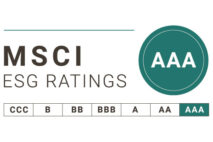Epson has updated its website, beefed up service support, and rolled out new software to quell public backlash over its policy of hard coding “end of life” instructions that “brick” some inkjet printer models when a certain key part—the waste ink pad—reaches its expected end of life.
“Underscoring Epson’s commitment to supporting its customers, this website has been updated to clear up any misconceptions regarding the serviceability and lifecycle of Epson printers,” the company said on its new website. On its updated website, Epson explains that its inkjet printers have absorbent ink pads that “collect, distribute, and contain ink that is not used on printed pages.” Over time, the pads become saturated and need to be replaced. Ink pads that prevent leaks are common in inkjet printers, including those made by other manufacturers.
The term “misconceptions” undoubtedly refers to recent criticism Epson has faced over the company’s alleged practice of designing printers to cease printing at a pre-determined time based on the expected life of absorbent ink pads—whether or not those ink pads have actually reached their end of life—and whether that practice amounts to planned obsolescence (see “Epson’s ‘Planned Obsolescence’ Policy Comes Under Fire”). As we wrote last week, the controversy for Epson began with a July 22 Tweet from Mark Tavern complaining that his wife’s “expensive” Epson printer stopped operating. From there, coverage of the issue snowballed across social media and into the mainstream press, becoming an avalanche of negative coverage that any manufacturer might dread—and be forced to respond to.
In earlier statements, Epson explained the situation this way:
Like so many other products, all Epson consumer ink jet products have a finite life span due to component wear during normal use. At some point, the product will reach a condition where either satisfactory print quality cannot be maintained or components have reached the end of their usable life. Epson is committed to ensuring the proper operation of all our devices to minimize the risks of property damage or personal injury during the life span of the product. The printers are designed to stop operating at the point where further use without replacing the ink pads could create risks of property damage from ink spills or safety issues related to excess ink contacting an electrical component.
Initially, it appeared that impacted Epson users had three choices: trash the dead printer, employ a one-time Epson reset utility to extend the printer life for a bit, or pay for an “authorized” service call to replace ink pads. Critics said the policy trapped users into needlessly expensive service for a simple fix while also contributing to e-waste pollution when consumers are forced to throw out their devices.
In its updated website statement, Epson tries to clarify the issue and provide customers with more options, including what it terms a “low-cost ink pad replacement service” and “certified” rather than “authorized” technicians. Epson states:
Similar to most electro-mechanical consumer devices, the lifespan of consumer inkjet printers depends on many variables of use over time. Epson’s consumer inkjet printers issue a service message to alert customers that the printer’s ink pads are approaching the end of acceptable print functionality. Most print users will never receive this message under intended use scenarios. It is directly dependent on factors like the printer model, frequency, usage conditions, and type of printing over time.
In the event a user receives this alert, the printer needs to be properly maintained in order to continue printing. Epson understands the importance for its customers to be able to print whenever they need to and offers flexible options to extend printing, including:
1. A one-time Maintenance Reset Utility, enabling north American customers to continue printing for a limited time in order to determine the repair solution that best fits their needs.
2. Customers can contact the Epson Service & Support team at 562-276-1300 (U.S.) or 905-709-9475 (Canada) (https://epson.com/contact-us) about Epson’s low-cost ink pad replacement service, which includes shipping and packaging round trip to and from Epson.
3. Customers can also work with a local certified technician to replace the ink pad to extend the use of the printer.
4. For customers who determine that the printer no longer meets their needs, Epson offers a recycling program as well a wide range of innovative new printing solutions.
Epson’s updated website also contains a lengthy FAQ section about service options, warranty coverage, and more information about Epson’s one-time Maintenance Reset Utility that gives users a bit more time before their printer dies, but not much: “It is offered to customers to complete existing print run needs and is not intended for extended use.”
Epson’s quick response shows that the company may be concerned about the fallout—with its customers and beyond. A Fight to Repair Substack questioned whether Epson’s practices might merit Federal Trade Commission (FTC) investigation. And, of course, this is exactly the sort of issue class-action attorneys could take notice of and file suit over. There is also the potential we could see other manufacturers face similar criticism if they, too, employ similar practices around ink pad end of life.
Saturated ink pads seem like such an innocuous service issue, but now that a spotlight is on the topic Epson appears to be scrambling to prevent it from flaring into a major legal challenge.






